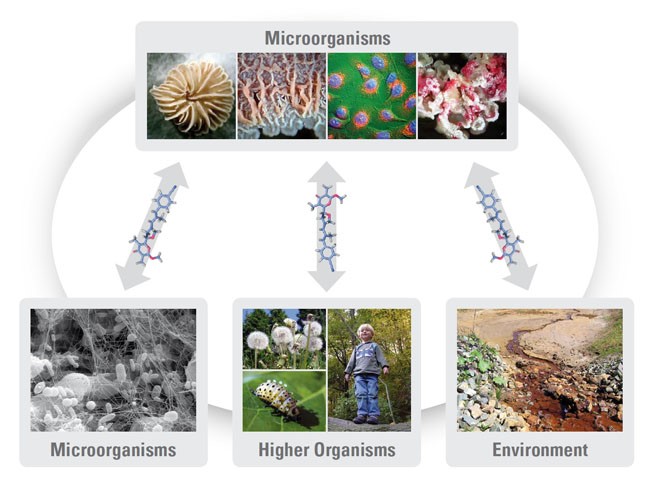Microbial Communication – Talking Microbes?
Microorganisms are often considered to be pathogens, but in fact most microbes are beneficial or even vital to humans, animals, plants and ecosystems. A key characteristic of microbes is that they can communicate among themselves, with their hosts and the environment. For instance, they start multiplying in a habitat only when they receive chemical messages from related cells and their surroundings to indicate that ambient conditions are suitable. Their close associations with plants, animals or humans also depends on the exchange signals with the cells of their hosts top establish symbiotic relationships, such as in the gut or on plant roots and leaves. However, there are also harmful microbes that usurp these chemical messages in order to infiltrate and infect organisms. From these examples, it already apparent that microbial communication in natural habitats has many facets and is often extremely complex.

Depending on the environmental conditions and on interacting organisms, microorganisms respond with the production of a multitude of low molecular weight compounds that mediate chemical signaling processes. One of the more striking discoveries from genome sequencing efforts is the demonstration that, based on current knowledge of biosynthesis pathways and their organization, most soil bacteria and filamentous fungi possess the genetic capacity to produce a multitude of different small molecules. Induction of such compounds likely depends on biotic or abiotic interactions.
Many microbial small molecules have evolved to be global regulators within microbial communities in the environment; their roles are of ecological and evolutionary significance. Small molecules play important roles in microbial communities such as soils, the rhizosphere, the gastrointestinal tract and other stable populations, or in pathosystems. Communication includes the function of signaling molecules as attractants or repellents. For instance, the interaction between individuals of one fungal species in mating interaction is regulated by pheromones, and the parasitic or mutually beneficial symbioses also depend on a constant exchange of signals.
The complex molecular interactions based on signaling in microbial communities remain largely unknown. This is true in particular for fungi, which constitute one major research topic in Jena. It will be essential to unravel completely the communication processes of microbes at the molecular level within their interactive networks in order to understand formation and stability of microbial consortia in ecosystems and in association with their hosts.





